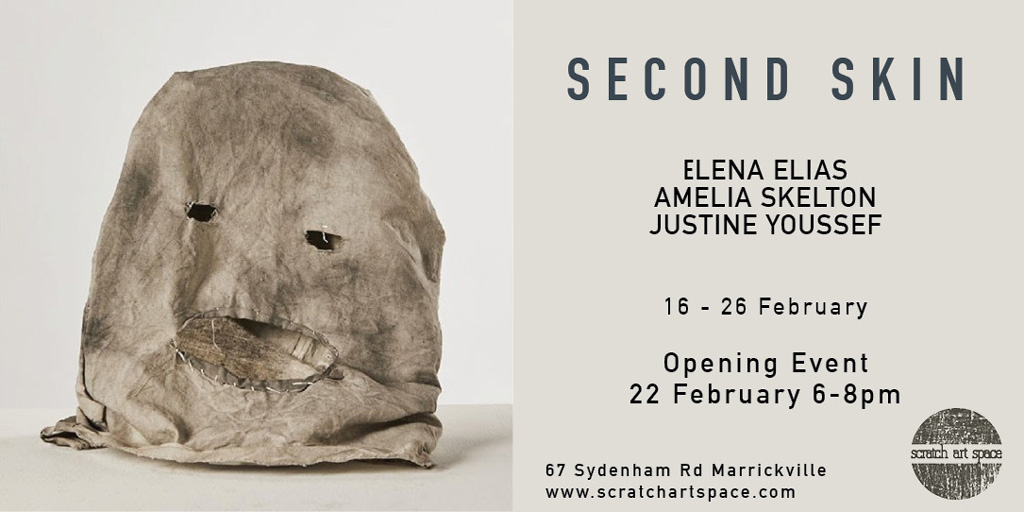
Elena Elias
Amelia Skelton
Justine Youssef
Opening Event Wednesday 22 February, 6 – 8pm
Exhibition Runs : Thu 16 – Sun 26 February 2017
An exploration of the bodily experience, its limitations and its boundless forms of representation
Exhibition Statement
Second Skin combines the work of three recent graduates from the National Art School whose practices conjure evocations of a bodily experience. Working with latex, fabric and wax, the materiality of Elena Elias, Amelia Skelton and Justine Youssef synthesize to bring together an exhibition in exploration of the bodily experience, its limitations and its boundless forms of representation.
Drawing upon ideas of phenomenology, Elena Elias’ works play with presence and absence exploring how we, as humans, are constantly mentally shaped by the volumes and weights, as well as empty spaces that surround us. Working in the liminal space between the two-dimensional and three-dimensional planes, visceral flesh-like sheets are contrasted against steel-cut empty space; sensuous waxed fabric forms drape from walls, and raw edged voids mark out rhythmic mental and physical progressions through space. Each work aims to both affirm, and negate, our ideas of what it means to be human, contrasting our physical experience, grounded in architecture and objects, spaces and non-spaces, with the softened and nuanced psychological experience.
Amelia Skelton’s sculptural pieces are likened to ‘shrouds’ and they materialise her process of obscuring the human form. She is particularly interested in the degree to which the representation of the human body can be pushed, while simultaneously maintaining a level of recognition. The shrouds specifically explore the relationship between the human body, and the universal obsession with self-representation and ornamentation.
Born of an inquiry into the diasporic Arabic community that raised her, Justine Youssef’s practice of auto-ethnography exists amidst a tension of extremes, between the nation that houses her and the heritage that formed her. Used paper, torn up, worn down, sewn together, coated in layers of wax and flesh and crimson coloured pigment, edges frayed and centres carved right through, echo a corporeal resilience through her process. Histories of colonisation and the politics of identity are in dialogue with her work where plant form stands for human form in synthesis with a background of ancestral rituals.
Elias’ dimensional play of space and medium, Skelton’s exploration of self-representation and it’s obscuration, and Youssef’s inquiry into identity and its ephemerality converge in an exhibition which asks of its viewers questions of their very own presence, both within the gallery space amidst the works of art on display, and within the very skin they inhabit as they walk within the gallery space.


